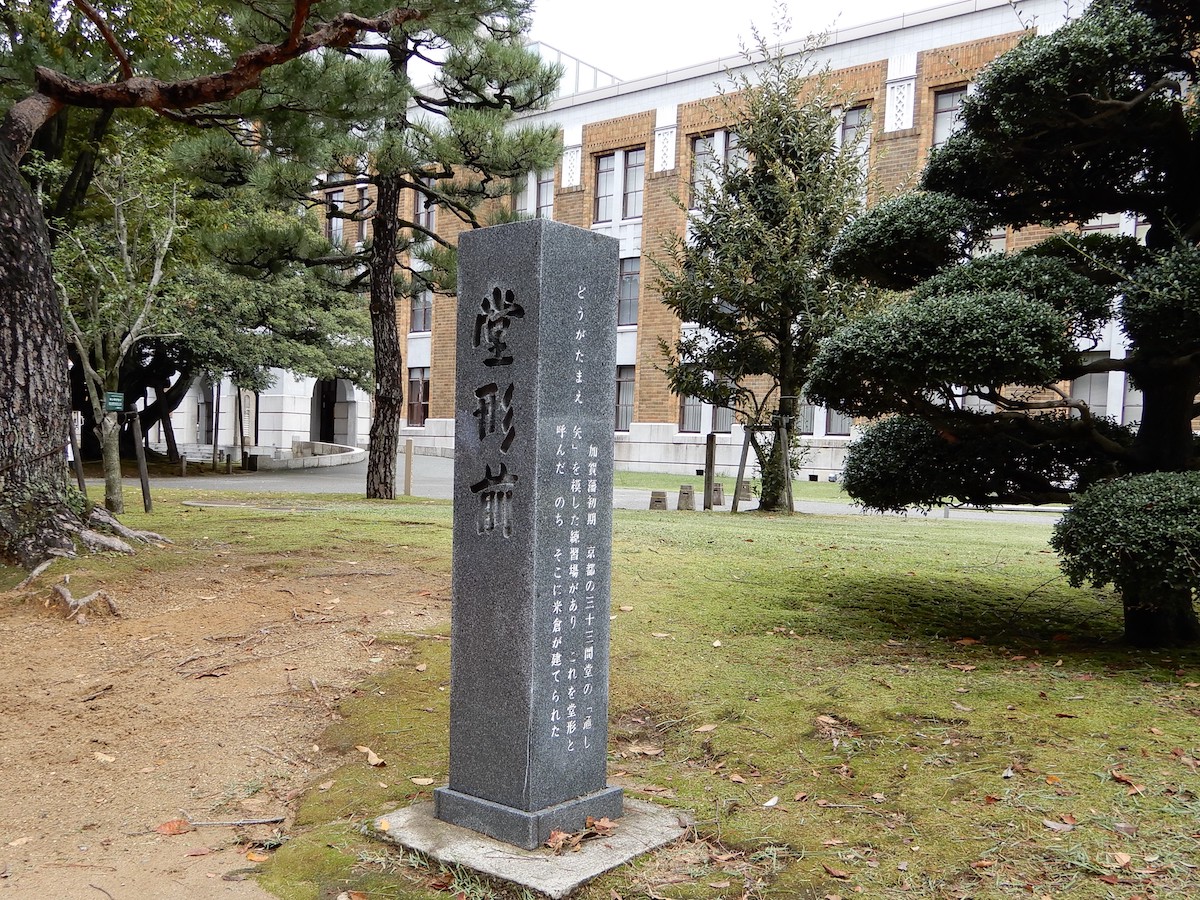This stone monument engraved with “Dōgatamae” lies in front of the former Ishikawa Prefectural Office (currently known as Shīnoki Cultural Complex). The side engraving reads as follows: “In the early period of the reign of the Kaga domain, this area was used as a practice ground for Kyoto Sanjūsangendō long-range archery, and was known as ‘Dōgatamae’. Later, a rice granary was constructed there. This area was used as training grounds by feudal retainers participating in the Sanjūsangendō Long-Rane Archery Competition.

“Dōgatamae”
Kaga Archery and Ōkura-shigeuji Yoshida
During the Edo Period, there was a distinguished mastery of archery known as Okura-shigeuji Yoshida. The third son of the Narishige Yoshida (a retainer of Toshiie Maeda), Shigeuji served under Hidetsugu Toyotomi, followed by Toshitsune Maeda (the third-generation feudal lord of the Kaga Domain), wherein he became an archer and received a stipend of 400 koku*. As were his ancestors before him, Shigeuji was an extremely accomplished archer, and became well known for his renewal of the Yoshida-style of archery. During the Siege of Osaka, he successfully followed Toshinori into battle and was rewarded with 1800 koku**.
* In the Edo period stipends were paid using rice.About 1 koku = 150g of rice, so 400 koku = 60,000 grams of rice).
** 1800 koku = approx. 27,000g of rice
The Best Archer in Japan
Archery experts from throughout Japan came to compete in the former Kyoto Sanjūsangendō long-range archery in honor of their respective clans, and the majority of Kaga feudal retainers participated. Ōkura-shigeuji Yoshida competed seven times from 1618 to 1628 and was recognized as the best archer in Japan a total of six times. No other (Kaga) feudal retainer was ever able to break this record. The archery system which Ōkura created is known as the Okura-style.
Old/Former・Yuminomachi
Kumichi refers to allotted residences given to groups of foot soldiers in the feudal government era. The name Yuminomachi (lit. town of arrows) originated as a name for the seven kumichi neighborhoods assigned to groups of archers. Located at the area now known as Kodatsuno, Kamiyuminomachi was one of those seven Yuminomachi kumichi.
Domain School Keibukan
The Meirindo and Keibukan were contained within the Kaga Domain School. The Meirindo was the main place of study for Confucianism, while the Keibukan was a training space for the military arts.
The subjects taught inside the Keibukan included archery, horse-riding, fencing, spearmanship, iai (the drawing of swords), sickle and chain weaponry, artillery, military flute etc..

